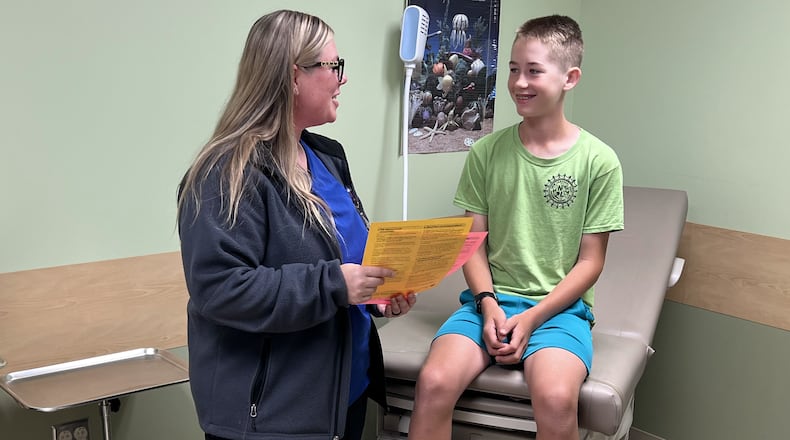The state of Ohio mandates that students in kindergarten through 12th grade receive vaccinations against 10 diseases. Ohio mandates students be protected against 10 vaccine-preventable diseases by kindergarten, and up to date on vaccines to enter seventh grade and 12th grade.
Vaccines can come in different combinations. One vaccine might protect against three different diseases but be administered through one injection.
“The proper times for safety and efficacy for vaccinations to be given, those are the times when kids’ immune systems are developed enough to respond to the vaccines and provide them the protection they need before they’re exposed and potentially become sick,” Dr. Becky Thomas, the medical director for public health said.
Public Health administrators said they also have seen a decline in the number of people maintaining a relationship with a primary care physician. Not only does the relationship guide patients through vaccinations, it guides a child’s health long term, they said.
Thomas said families who have the long-term relationship with a doctor can assist in making sure the child reaches developmental milestones. She said it’s also important to have the resource when discussing a child’s mental health as well.
“Getting that established now is vital, particularly because of the ratio between the number of doctors that are available, pediatricians, and potential patients,” Dan Suffoletto, the public information manager for public health, said.
He said it could be months before a new patient sees a pediatrician.
It’s very easy for germs to spread in a school setting. Sharing art supplies, moving about in gym class and a cough or sneeze can easily transmit germs quickly, he said.
Students can be carriers of a virus or disease without showing symptoms and bring the illness home to other people in their family, including babies who are too young to receive the vaccination, and the elderly who are at high risk.
As children enter middle school and high school, they are still receiving important immunizations like boosters. The sixth-grade to seventh-grade time frame is when students should be receiving the tetanus booster that also protects against whooping cough.
Thomas said Public Health has seen a decline in vaccination rates among older children.
A student who does not receive the required immunizations prior to the first day of school has a 14-day grace period to make sure they are protected. If the grace period exceeds 14 days then the student will be excluded from school until vaccinated properly.
The decline of vaccination rates could be a result of barriers that exist such as transportation or access to a physician’s office.
Pharmacies can now administer vaccines to children as young as five years old, the age a child must be to enter kindergarten.
“That also expands access both from a transportation and a time factor for busy parents,” Thomas said.
Public Health and Dayton Children’s Hospital are working to educate the community on the benefits of vaccinations for children through a campaign called Vaccines Protect Kids.
Suffoletto said that through the campaign, both organizations work to provide school districts and superintendents with information to keep students healthy and in the classroom.
An available resource to use to ensure children are up to date and vaccinated prior to their upcoming school year is the Immunization Clinic located inside the Public Health building in Dayton.
It provides routine vaccines for infants, children, teens and adults.
Required vaccines
Kindergarten
- DTaP - Diphtheria, tetanus, pertussis (whooping cough)
- Polio - Poliomyelitis
- Hepatitis B - Hepatitis B virus
- MMR - Measles, mumps, rubella
- Varicella - Chickenpox
Seventh Grade
- A Tdap booster - Diphtheria, tetanus, pertussis (whooping cough)
- A meningitis ACWY vaccine - Meningococcal disease
12th Grade
- A Tdap booster - Diphtheria, tetanus, pertussis (whooping cough)
- A meningitis booster vaccine - Meningococcal disease
About the Author


